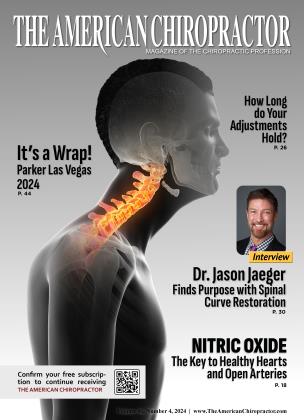Exercise and Longevity
by Lynn Toohey, PhD
On February 4, I returned from a four-day conference on longevity. Noted speakers included Dan Murphy, DC; Stephan Ediss, DC; Richard Belli, DC; Sarge Sandu, ND; Brandon Lundell, DC; Jared Allomong, DC; and me. It was invigorating, challenging, and off the charts with the latest and greatest research about what makes us age and how we can support a long life full of quality and vigor. I’ll write more about that in the next issue, where I will summarize some of the key points made during the annual Nutri-West Winter Symposium held in Phoenix, Arizona.
In this article, I would like to focus on just one aspect of an important environmental factor and longevity: exercise. Do we quit exercising because we age, or do we age because we quit exercising? We used to ponder that question when I was a teaching assistant working on my master’s thesis in exercise physiology at Colorado State University in Fort Collins, Colorado. Obviously, several different pathways are involved in the aging process, but exercise seems to stand out as one of the best ways to keep us healthy and living longer.
Last December, the Journal of Applied Physiology reported on Richard Morgan, a 92-year-old who didn’t take up exercise until his seventies and now holds four world championships in indoor rowing; he is described as having the aerobic engine of a healthy 30-to-40-year-old man with the body fat percentage of a whippet. In fact, Morgan “demonstrated remarkably fast oxygen uptake kinetics, akin to values for a healthy young adult, indicating well-developed and/or maintained cardiopulmonary function. The high values for cardiopulmonary function, muscle mass, metabolic efficiency, and maximum power output may infer the pliability of these systems to maintain high functionality at an advanced age.”1
Additionally, a study of twins at Washington State University showed that differences in physical activity and body mass index correlated to differences in the twin’s epigenomes, the molecular processes that are around DNA and independent of DNA sequence but influence gene expression. We’ve always known that exercise can reduce obesity, but it is apparent that consistent exercise can change molecules in the human body that influence how genes behave.2
Together, these studies indicate that exercise is hugely important for any longevity support protocol. For the nutrition that supports longevity, including ergothioneine, CoQ10, pyrroloquinoline quinone (PQQ), taurine, etc., please refer to my The American Chiropractor articles published in February and March 2024 on “longevity support.” Next month, I will treat you to a recap of the longevity symposium with the experts!
Dr. Lynn Toohey organizes seminars and consults as a nutritional expert at Nutri-West (www.nutriwest.com). Toohey also authored the Functional Health Evaluation program that analyzes blood tests and raw DNA data (www.FHEcloud.com). You can reach Dr. Toohey at [email protected] with any questions.
References
Daly LS, Van Hooren B, Jakeman P. Physiological characteristics of a 92-yr-old four-time world champion indoor rower. J Appl Physiol (1985). 2023 Dec 1;135(6):1415-1420. doi: 10.1152/japplphysiol.00698.2023. Epub 2023 Nov 2. PMID: 37916272.
Duncan GE, Avery A, Maamar MB, Nilsson EE, Beck D, Skinner MK. Epigenome-wide association study of systemic effects of obesity susceptibility in human twins. Epigenetics. 2023 Dec;18(1):2268834. doi: 10.1080/15592294.2023.2268834. Epub 2023 Oct 23. PMID: 37871278; PMCID: PMC10595392.
 View Full Issue
View Full Issue






